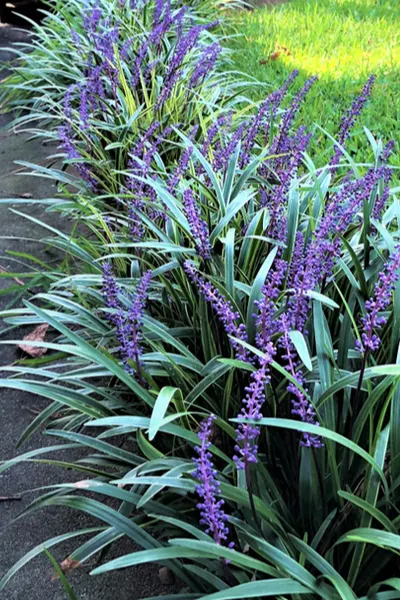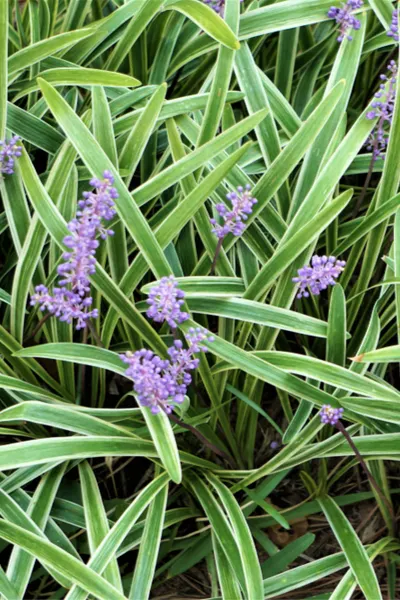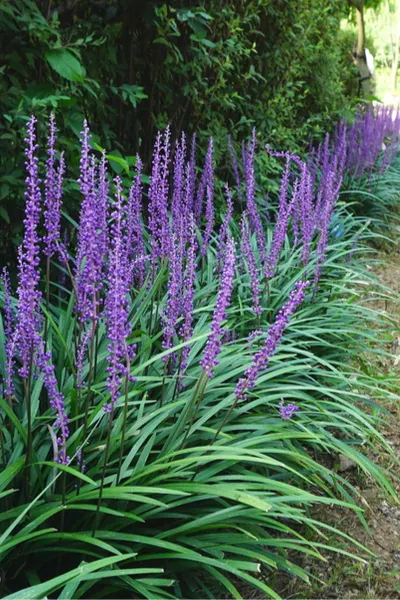If you are looking for a tough, drought-resistant perennial to grow along walkways, paths and flowerbed borders – liriope might just be the perfect plant for you.
Liriope, commonly referred to as lily turf, is truly one amazing perennial. Not only is it drought and deer-resistant, it can also handle a wide range of climates, all the way from growing zones 4 to 10, and everything in between.

But when it comes to liriope, that is only the beginning. Although considered a sun-loving plant, it proves equally adept at handling partial to even mostly shady areas. (See: Shade Loving Perennial Plants)
And with a blooming cycle from late summer to early fall, liriope provides a burst of color to flowerbeds at a time when many perennials are starting to fade.

Here is a look at how to grow and care for liriope, along with a peek at where it fits best as a low-maintenance landscape plant.
Growing Liriope – The Perfect Border Plant
Liriope produces thick, lush, foliage reaching 10 to 18 inches in height when fully mature. The low height, along with its compact one-to-two foot wide spread make it an ideal choice for edging beds and walkways.
The hardy perennial can survive and grow in both heavy, clay soils – or light, sandy soils. It is extremely drought tolerant, and once established, will rarely if ever need watering.

In fact, about the only thing that bothers liriope is overly wet soil conditions. With that in mind, avoid planting in low-lying areas of your landscape, or areas prone to excessive moisture.
Growing Liriope – Planting & Care
It’s hard to find an easier choice than liriope for planting and long-term care. Mix in a bit of compost at planting time to help with drainage around the roots. Dig holes slightly larger than the root clump, and cover. That’s it!
Lirope Muscari is available in varieties ranging from solid green, bluish-green or creamy white foliage, to variegated styles with combinations of each. Product Plant Link : Liriope Muscari – Veriegated

For border plantings, locate plants 12 to 18″ apart to allow space for them to grow together. For mass planting, space about 24″ apart to allow for growth in all directions.
There is little need for additional fertilizer at planting time, as plants are extremely low feeders. The compost will more than provide enough nutrients for strong growth.
Long Term Care
Liriope Muscari grows slowly outward in clumps. In warmer climates with mild winters, it grow as an evergreen. However, in climates with cooler winters, liriope dies off in the fall. In either case, cutting back the foliage in the fall helps to improve next year’s growth cycle.

Plants can be divided every three to five years to keep growth in check. When dividing, plants can easily be split to form new starts for additional planting. Dividing should take place in early spring or late fall for best results.
Here is to growing liriope in your landscape, and to enjoying years of low-maintenance foliage and color!
This Is My Garden is a website dedicated to spreading the love and knowledge of gardening around the world. We publish two new garden articles each week. This article may contain affiliate links.

